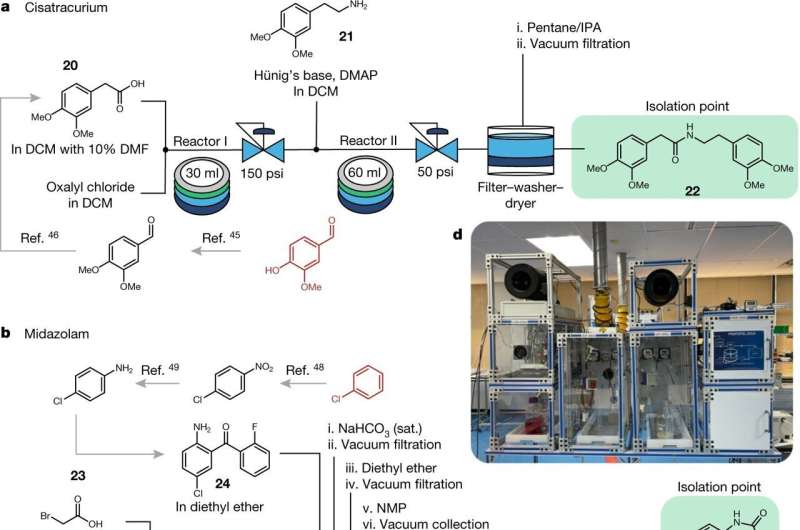April 29, 2022 report
A computer system that analyzes chemical waste and proposes ways to make new products from it

An international team of researchers has developed a computer system that can analyze a sample of chemical waste and create the routes to synthesize new, useful chemicals. In their paper published in the journal Nature, the group describes the work that went into creating the system and how well it worked when they tested it by synthesizing chemicals from waste samples.
As the researchers note, the chemical industry generates an enormous amount of waste—manufacture of products like pharmaceuticals, cosmetics and fertilizers produces waste products consisting of a large number of molecules. Chemists have long sought what they describe as "circular chemistry"—where the waste created by one process is used as base material to create other products. But as the researchers also note, finding a way to do it is problematic. They point out that even a waste sample with a small number of molecules can generate millions of routes toward the creation of a new product. In this new effort, the researchers used a computer system designed to understand the intricacies of complicated entities based on single samples. The original platform was developed by a team at a company called Alchemy, based in Indiana. It has been used in the past to determine what sorts of signatures could indicate life on other planets.
In this new effort, the researchers worked to add more intelligence to the original platform to give it a better understanding of the processes involved in synthesizing new compounds based on a single sample mix of chemicals. They developed a system that was capable of generating the routes required to synthesize approximately 300 drugs currently used in medicine, such as carvedilol and salbutamol, from a waste product with over 200 compounds.
The routes developed by the system are descriptions of the steps to synthesize a given compound. The researchers tested their system by using several of the routes that were generated to synthesize several real-world drugs. They suggest their system could be developed into an industry-wide platform that dramatically reduces the amount of waste produced by the chemical industry.
More information: Agnieszka Wołos et al, Computer-designed repurposing of chemical wastes into drugs, Nature (2022). DOI: 10.1038/s41586-022-04503-9
Journal information: Nature
© 2022 Science X Network


















